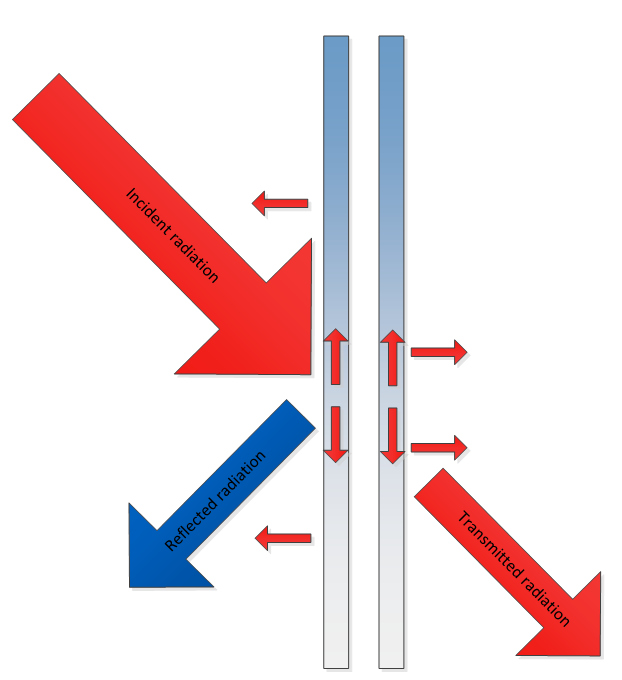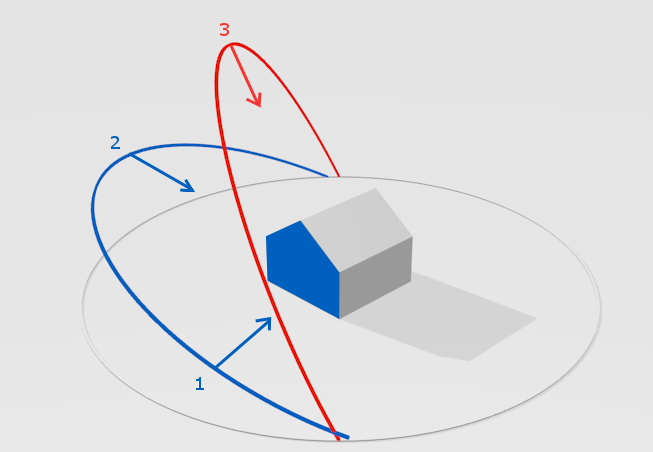Solar heating in building automation
How radiation sensors in building climate control enable zero-energy buildings
This application note looks at solar radiation as a source of heat, lighting and electricity in buildings. Modern building automation systems integrate multiple functions to bring highest class performance to their building. We give an overview of how pyranometers can be used to assess solar gain in such systems to improve efficiency and save costs.
Read the full article here: Solar heating in building automation - note (PDF)
Towards zero-energy buildings
Over the past decades great leaps have been made in isolating buildings. This increases their energy efficiency and lowers heating power required, but also requires effective cooling systems when they experience thermal loads.
New regulations in the EU and some US states add to this challenge in requiring buildings to become Net Zero-Energy (NZE), meaning that buildings need to generate the amount of energy they spend from a renewable source on-site.
These challenges require building automation systems to become smarter in the way they manage internal building climates. In particular, zero-energy buildings will need to control their solar gain.
Solar gain as a source of heat
Solar gain is the heat gain of a building as a result of solar irradiation onto the building and through its transparent surfaces (Figure 1).
In zero energy buildings the irradiation through windows can be controlled by active shading to reduce energy consumption. In winter, solar gain can be admitted to decrease heating costs. In summer, solar gain can be deflected to prevent expending energy for cooling.
A modelling approach seems useful to get a feeling for how much energy can be saved. This requires calculating the transmittance of the transparent elements as a function of a.o. wavelength, type of glass and irradiance angle.

During the day the angle of incidence of the sunlight varies. This changes the fraction of transmitted light. At some angles, for some wavelengths, all light is reflected, while for other wavelengths and angles light is partially transmitted.
It quickly becomes clear that modelling the actual transmitted energy is complicated. This is why simplified factors are used to indicate transmission values.
In Europe, the coefficient G represents the average fraction of total transmitted light for a given window, while in the US the Solar Heat Gain Coefficient is used (SHGC).
For a typical window this fraction can be as high as 55 %[1]. This means that over half of irradiated energy is transmitted into the building. For a room facing south at winter noon in a northern European country, this translates into roughly 0.5 kilowatt of heat entering through each square meter of window.
The daily total of irradiance received by a window varies greatly with site location and façade orientations. Combined with surface/volume ratio and season this causes great variety in the effect on building automation systems, as illustrated in Figure 2.

To further complicate matters, when applying shading to reflect irradiance during summer, electricity usage for automated lighting inside the building will increase as less light will reach the interior.
Integration with building automation
In an integrated system, prioritizing between solar gain, lighting systems, cooling demand and solar thermal or electrical yield is not easy.
European standard prEN 15232: Impact of Building Automation Control and Building Management recognizes this and has dedicated annex A specifically to this integration.
The standard describes four classes of building automation systems, stating that the most energy efficient class should have integrated solar gain regulation.(Table 1)
An open question is then how zero-energy building automation systems measure the solar gain they receive as a result of solar irradiance.
| BAC efficiency class | efficiency coefficient | sunlight regulation |
| A - high energy performance | 0.70-0.86 (thermal) 0.86-096 (electrical) |
integrated |
| B - advanced system | 0.80-0.91 (thermal) 0.93-0.98 (electrical) |
motorized and automatically controlled |
| C - standard | 1 (definition) | motorized and manually controlled |
| D - non energy efficient | 1.10-1.51 (thermal) 1.05-1.10 (electrical) |
fully manual |
Pyranometers
Traditionally, irradiance is measured using pyranometers. Photovoltaic rooftop systems are often already equipped with pyranometers to quantify their yield.
Zero energy buildings fitted with PV arrays for power generation can also use these data points to optimize their HVAC (Heating Ventilation and Cooling) system.
A pyranometer accurately measures incident global horizontal irradiation when mounted horizontally and facing up. Typically a pyranometer is communicated with digitally over Modbus/RTU (RS-485).
A typical digital pyranometer outputs the measured irradiance corrected for temperature dependence. The expected uncertainty in daily sums of irradiance as stated by the WMO is 2 % for the best performing class[3].
When connected to a building automation and control system (BACS), the pyranometer’s output can be used as a valuable input to control other connected systems.
Pyranometers vs photodiodes
When considering alternatives for pyranometers, photodiodes, are sometimes considered to measure the irradiance.
Pyranometers have a relatively flat spectral response. This means they measure actual irradiance more closely. A photodiode, however, will generally be responsive to only certain wavelengths. This causes errors when the irradiance spectrum changes due to cloudiness, for example.
Directional response errors cause photodiodes to overestimate the irradiance at high solar zenith angles, and underestimate it at low solar zenith angles.
Most pyranometers are meant to be mounted outside and endure weather conditions, and have mechanisms built in to prevent measurement errors due to precipitation.
| photodiode | pyranometer | |
| cost range | 300 EUR | 360 EUR |
| digital output | uncommon | common |
| flat response | no | yes |
The advantages of the pyranometer with respect to photodiode light sensors (Table 2) make that the World Meteorological Organisation (WMO) and ISO 9060:1990 both recommend a pyranometer as the instrument of choice for measuring Global horizontal irradiation.
Example of strategies of using pyranometer measurements in building automation
Detailed strategies that can be used using a pyranometer signal can be found in the full article.
...
Read the full article here:







